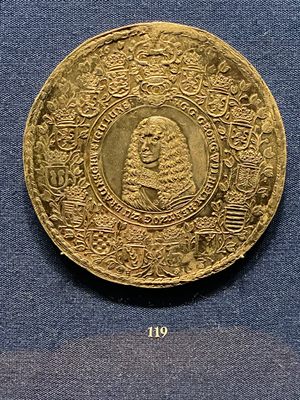About
The hobby of coin collecting has been practiced since antiquity, not only to accumulate wealth but also to appreciate of the intricacies of engraving. These collections of coins were often stored in large wooden cabinets during the post-Renaissance years, and many national collections in Europe are still referred to as “coin cabinets” by numismatists.
Founded circa 1530, the Dresdner Münzkabinett is one of Europe’s largest numismatic collections, as well as one of the oldest museums in Germany. Currently, over 300,000 items call the cabinet home—from ancient coinage to minting equipment to historic documents, only a tenth of which are on permanent display.
The public portion of the coin cabinet is housed in the museum at Dresden Castle and consists of coins, banknotes, medals, seals, counterfeits, primitive money, and minting machineries throughout the ages. These exhibits, of course, also focus on the monetary history of Saxony and Germany.
In addition to research facilities and five centuries' worth of artifacts, the Münzkabinett also possesses legal claim to any hoard of coins excavated on the Saxon territory, whose soil is rich in such hidden treasure. Coin hoards are now worth more than their bullion values, as they provide a good glimpse into the past.
Related Tags
Published
July 19, 2022











































